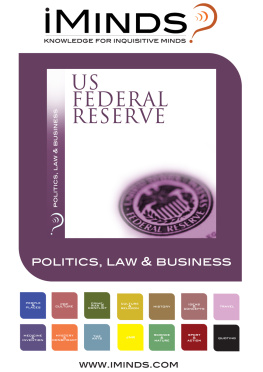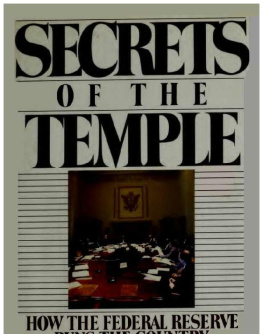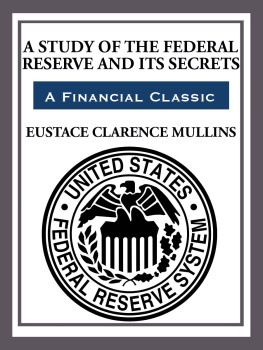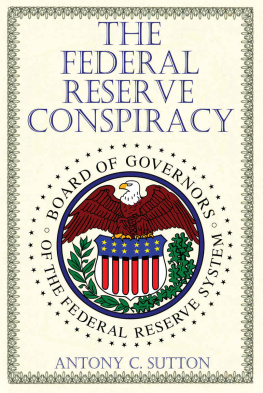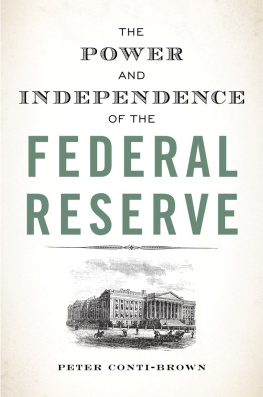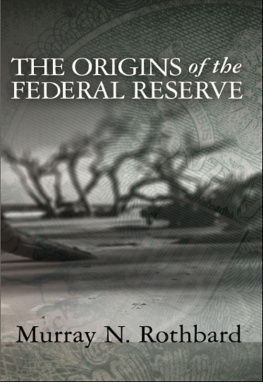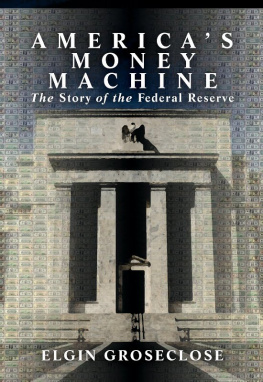Insights on James Rickards's The New Case for Gold
Insights from Chapter 1
#1
The Fed is not insolvent, but it is highly leveraged, and its balance sheet is not marked to market. This makes it vulnerable to large swings in market value.
#2
The Feds balance sheet lumps U. S. Treasury securitiesNotes and Bonds, nominal into a single category and shows holdings of approximately $2. 3 trillion as of this writing. The Fed then breaks those holdings down by regional reserve bank.
#3
The Federal Reserve is so dominated by MIT-trained quants and PhDs that the policy makers get lost in the models and lose sight of the temperament of the American people. In early 2015, I had a private dinner with an official from the Federal Reserve who was categorical: Were not insolvent, and never have been.
#4
The Gold Reserve Act of 1934 required the United States to issue gold certificates to the Federal Reserve, which it did. The certificates were last marked to market in 1971, at a price of $42. 22 per ounce. Using that price and the information on the Feds balance sheet, this translates into approximately 261. 4 million ounces of gold, or about eight thousand tons.
#5
The confidence of the entire global financial system relies on the U. S. dollar. The solvency of the Fed's balance sheet depends on a thin sliver of gold. This is not something the Fed wants to acknowledge or discuss publicly.
Insights from Chapter 2
#1
A classic definition of money has three parts: medium of exchange, store of value, and unit of account. If all three of those criteria are met, you have money of a sort. If you ask economists, What is money. they reflexively assume that only fiat currencies printed by central banks qualify and lapse into technical discussions about narrow or expanded versions of money called M3, M2, M1, or M0.
#2
The use of gold as money is not only ancient but eminently practical. It is the only physical element that is suitable for money, because it is the only physical element that is not poisonous, floats away when exposed to air, or decomposes when exposed to water.
#3
The eight metals that were used as money in ancient times are the so-called noble metals, located around in the center of the table. They are iridium, osmium, ruthenium, platinum, palladium, rhodium, silver, and gold.
#4
Gold is the only metal that has all the qualities necessary to serve as a reliable and practical physical store of value. It is rare, malleable, inert, durable, and uniform. It is the only metal that can pass the test of being money.
#5
Gold is not an investment, because it has no risk and no return. It is just gold, and it will always be just gold. It has no maturity risk, because it isnt supposed to. There is no issuer risk, because nobody issues it.
#6
Gold is not a commodity, as it has no industrial uses other than a few. It is traded on commodity exchanges and reported in the commodity section of your favorite Web site. It is often used in electronics for coatings, connections, and the like, but these are still limited uses.
#7
The London Bullion Market Association, which is made up of American and British banks, creates paper contracts that are not gold. These contracts include exchange-traded funds, which are shares of stock. The ticker symbol GLD is an indication that the product is not gold.
#8
The best case scenario is that the bank would terminate the contract and give the counterparty a cash settlement at the closing price as of the date of termination. In a worst case scenario, the bank could fail and the investor would get nothing.
#9
Gold is a physical currency that provides insurance against the risks digital currencies face. As a practical matter, honest citizens cannot get access to large quantities of cash without being suspected of drug dealing, terrorism, or tax evasion.
#10
The international monetary system, which is based on the U. S. dollar, is nearing its end. The dollar has been criticized as a money, and has been disparaged continually by governments and economists since 1971, when America ended the convertibility of dollars into gold.
#11
The international monetary system has been in flux since 1870, when the gold standard was replaced by the dollar standard. We have no standards or anchors in the system today, and since 2007 we have been living with confusion, volatility, and suboptimal performance in the markets and the economy.
#12
The truth is, gold has never gone away. The power elites stopped talking about it and publicly ignored it, yet they held on to it. If gold is so worthless, why does the United States have more than eight thousand tons.
#13
The International Monetary Fund is the third largest gold holder in the world, and it plays a crucial role in the global monetary system. It was created at the Bretton Woods Conference in 1944, and it took until the 1980s for its mission to be clear.
#14
The IMF has always been a rich countries club, and its voting mechanism requires an 85 percent vote to make any significant changes. The United States has over 16 percent of the votes, which means that if all the other members combined voted against the United States, it still wouldnt be enough to overcome U. S. objections.
#15
The SDR is world money, and it is becoming more and more important in global finance as the dollars power declines. The IMF can exchange SDRs for other hard currencies. The only shelter in the storm will be hard assets, including gold.
#16
If people lose confidence in the IMF and the SDR solution, who bail out the IMF. Right now, there isnt anyone. If SDRs work, it will be in part because so few people understand them.
#17
The best way to evaluate the shadow gold standard among various countries is to use the gold to GDP ratio. The biggest winners are the 19 nations that make up the Eurozone and issue the euro, whose ratio is over 4 percent.
#18
China is trying to acquire enough gold so that when the international monetary collapse comes, China will have a prime seat at the table. Other countries with small gold-to-GDP ratios will be spectators in the global monetary reset, and will have to content themselves with whatever system the United States, Europe, Russia, and China devise.
#19
Gold is money, and it will remain as a store of wealth. It is still important behind the scenes, and it will be even more important in the years to come.
Insights from Chapter 3
#1
Gold is not an investment, a commodity, or a paper contract. It is an element with atomic number 79, and it is the opposite of complex. It is robust in the face of international monetary collapse and financial market complexity.
#2
The economy is a complex system, and as such, it is not governed by equilibrium models. These models do not take into account the impact of recursive functions in densely connected networks.
#3
The most catastrophic outcomes can occur from minute changes in initial conditions. It does not take large causes to produce large consequences. Trifling events, such as the unexpected failure of a small, unknown broker in a distant part of the world, can cause systemic collapse.
#4
The best approach is not to focus on individual snowflakes, but to study the systemic instability. By getting a good grasp of complexity, you can anticipate systemic collapse even without seeing the snowflake.
#5
The most important new tool in economics today is complexity theory, which explains how capital markets are not equilibrium systems. Every central bank macro model is obsolete.
#6
The world is in a state of complexity. Were out of an old state, but we havent reached the new state. Were on that turbulent, bubbly surface, and investors are confused.


